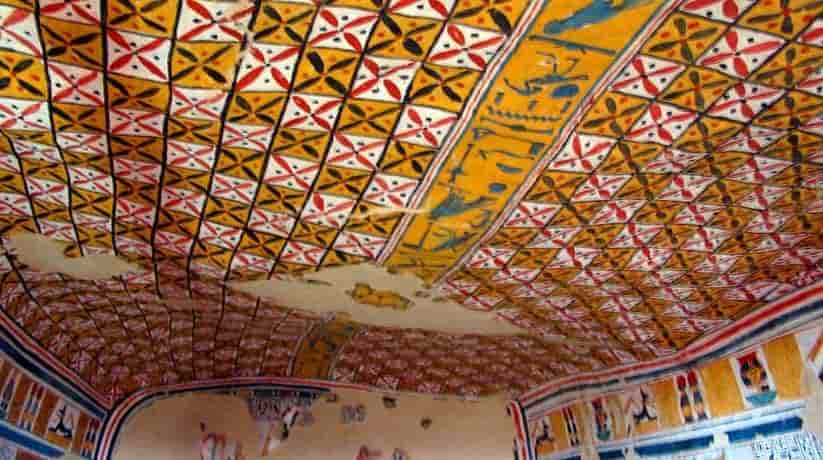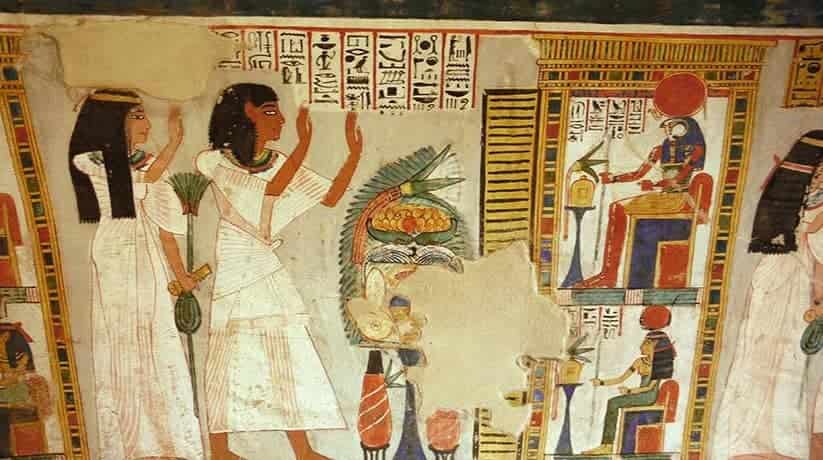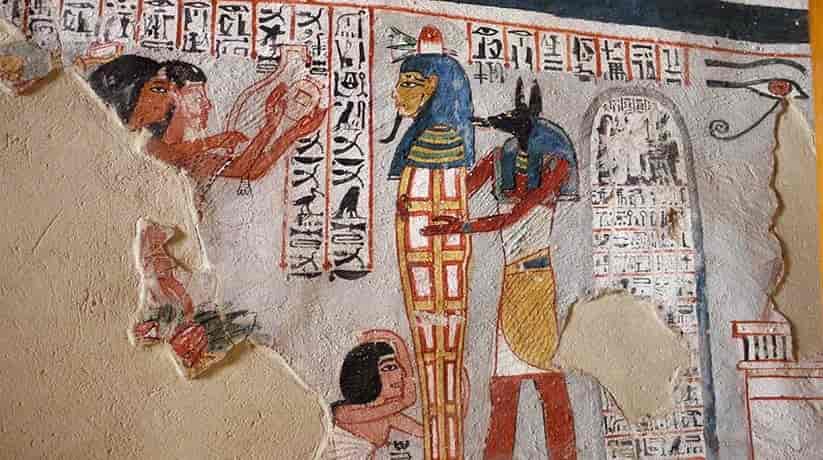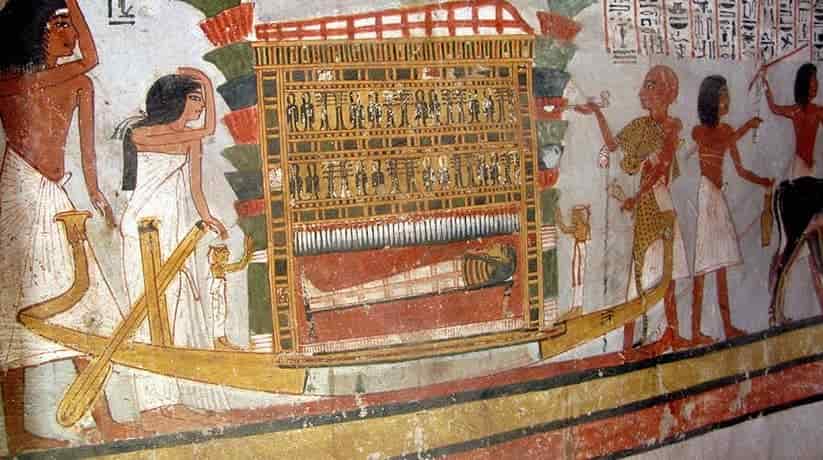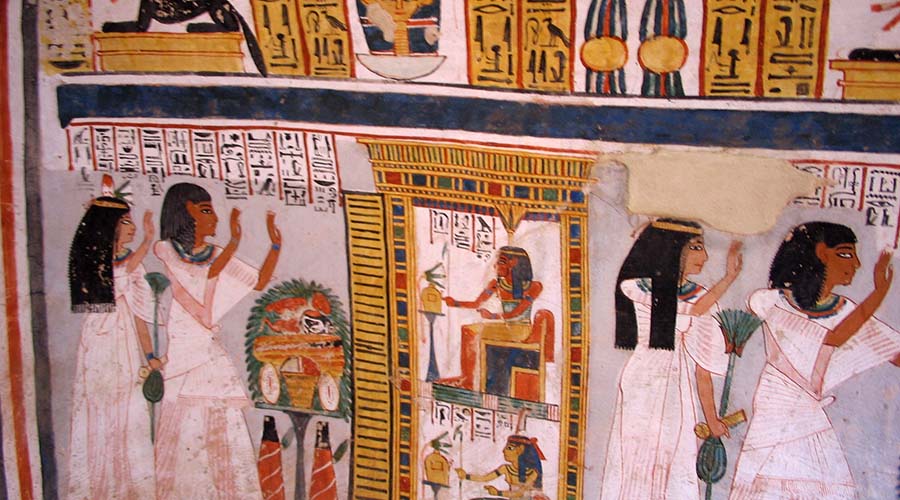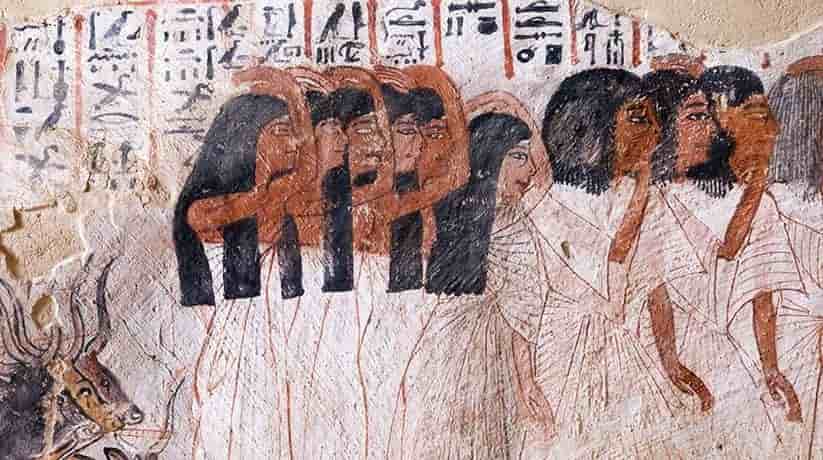Roy tomb Luxor TT 255 Egypt tours, prices, booking, reviews
Roy tomb Luxor TT 255 located in the West Bank of Luxor (ancient Thebes). The tomb is in the region which known as Dra’ Abu al-Naja, at the northern end of the Theban necropolis. Moreover, Roy tomb Luxor is on the hillside just before the road turns off towards the Valley of the Kings. It is one of two in this area that have recently opened to the public. In fact, the tomb is a small tomb with only a single chamber. The chamber includes a burial shaft which measures about 1.85 by 4 meters. It also preceded by an open courtyard. In fact, Roy tomb belongs to a royal scribe named Roy. Roy was the steward in the estate of King Horemheb and the Temple of Amun.
However, Roy tomb Luxor also belongs to Roy’s wife, Nebtawy (Nebettauy, nicknamed Tawy). His wife was a singer of Amun. In fact, the tomb dates back to the late 18th and early 19th Dynasties. There seems to be some question whether the couple had any children or not. In fact, the tomb known since 1822 and documented at the time by the Hay Mission of the British Museum. The orientation of the tomb is south east. Moreover, its walls not flat and the surfaces rather roughly hewn. The corners somewhat rounded. Furthermore, the depictions applied to a thin mortar. It fills the irregularities of the walls and ceiling. Hieroglyphs are black on a white or yellow gold base. The columns of hieroglyphs separated by thick vertical red lines.
Further details about Roy tomb Luxor:
Though small, the tomb has a decorated ceiling, adorned with geometric patterns. Moreover, the pattern consists of polychromic rectangles combined with small floral designs. Unfortunately, it is lower than an average person’s height. It may well be subject to damage by tourists who bang their heads on its plastered surface. Other decorations in Roy tomb Luxor are of an informal style. Moreover, they appear to drawn sketches. They less idealized than, for example, the decorations in Ramose tomb. Within the tomb, there are four registers. They depicted on the front wall. In the upper register, a servant leads a young cow and brings jars sealed. It is with leaves before Roy and his wife.
The second, unusual register, portrays two cattle. One is white and one is brown. They pass each other in opposite directions while plowing a field. Though the cows themselves elongated and appear almost as stick figures. The composition is indeed interesting. Furthermore, to their left is a man standing with a child beneath a drawn tree that may be a sycamore. A water bottle and a lunch basket tied to the branches of the tree. In the next register down, a laborer plows a field, and behind him, another man sows seed. Moreover, surmounting these figures, a young boy stands next to a tree drinking from the water bottle. In the final, lower register, a foreman in a white costume leans on a staff. He supervises a woman and also two men harvesting flax.
More details about Roy tomb Luxor:
In fact, this scene now destroyed. Moving to the left (southern) wall, there sre in the upper register five scenes from the Book of Gates. To the left, Amenemope, the overseer of the royal granary, and his wife Tai. They stand in adoration before a shrine to Ma’at and Nefertum. Moreover, to their right, Roy and his wife stand and offer food before Hathor and Re-Harakhty. Next, the couple stand before the Ennead. Roy’s wife holds a sistrum and a roll of papyrus, though much of this scene destroyed. At right, Horus also leads the deceased couple before a balance. It is on which two Ma’at statuettes are in perfect balance against their two hearts. Paired hearts such as these are not unknown but are not common. Anubis and Thoth record the favorable judgment.
Finally, the couple presented by Horus-son-of-Isis to the god Osiris. It is with green colored skin, who sits in an painted nao. Moreover, Roy is wearing a heart amulet around his neck. Here, we find an error in the drawing. It appears as though his right arm caught up within the string holding the heart amulet. In front of Osiris stand the Four Sons of Horus, emerging from a lotus blossom. Furthermore, behind the god are two goddesses, consisting of Isis and Nephthys. In the lower register on the left wall, there is a depiction of Roy’s funeral procession. This sort of decoration is a standard one. It well painted and the details of the mourners’ faces display a variety of emotion. Left of this, four officials who are friends of the deceased stand and hold staffs in one hand.
Further details about Roy tomb Luxor:
It is while their other hand covers their mouths in a gesture of mourning. Here, a woman kneels below a casket, holding the canopic equipment. It also contains the viscera of the deceased and carried by four servants. Moreover, it surmounted by a figure of Anubis. Above Anubis are some more hieroglyphs, smaller than the others, due to a lack of space. Eight women, dressed in mourning, precede the coffin, which pulled on a sled. Roy’s servant, Thutmes wears the panther skin of a sem-priest. He fumigates the barque with incense. In front, men drive the four cattle that pull the sled. At right, six women and eight men depicted also in mourning. They preceded by a damaged scene depicting a row of officials, two of whom make an offering of water.
The funerary barque itself adorned with two horizontal alternating rows. The rows are of double Djed pillars and Tyet Knots. The white sarcophagus decorated with horizontal and vertical yellow bands. It rests on a funeral bed with feet in the shape of lion’s paws. Moreover, to the right in Roy tomb Luxor, the mummy of Roy stood upright. It is as his wife kneels and weeps at her feet. Moreover, a priest wears the mask of Anubis and prays for the deceased. Here, the deceased has a large collar about his neck and wears a blue wig. To the far right displayed the destination of the procession. The tomb has a pyramid shaped superstructure. It built before the slopes of the Mountain of the West.
More details about the tomb of Roy Luxor:
A frieze of a chapel surmounted by Anubis faces of Hathor. Moreover, double kheker friezes and a double column of text repeated six times. They are in well preserved colors and run across the top of this wall. It repeated, though without the texts, on the right wall. All the figures on the left wall face towards the rear of Roy tomb Luxor. Much of the rear wall has destroyed. Here, the painted plaster applied in a thick coat over rough-cut bedrock. It now fallen to the floor because of its weight. The scenes were those of adoration and include the deceased. It is before figures of the king’s wife, who holds two sistra before the god Osiris. At the bottom, and to the left, a few traces remain of a scene.
It depicts Hathor as the Lady of the Sycamore, emerging from her sacred tree before Roy and his ba. Above that, Roy stands before an offering table piled high with various kinds of bread. It is while Amenhotep I and his mother Ahmes Nefertari stand in adoration. They offer bouquets before Anubis. There is also a double scene of Horemheb and his queen Mutnodjmet before Osiris. The niche on the rear wall not well preserved. It contains a stela on which the barque of Re adored by baboons. Roy and Nebtawy depicted with the text of a hymn to Re. Part of the stela on the lower right is now missing. On the right, or north wall, there are Roy and his wife and an offering table between them. They sit while receiving offerings from a sem-priest. Onions seem prominent among the various offerings.
Further details about Roy tomb Luxor:
Just behind the priest, two female mourners go with two coffins. Further to the right, Roy and his wife again are once again seated. They receive offerings including a platter. It covered by a huge and made cover of reeds and flowers. Moreover, behind the couple, in an upper sub-register, sit Roy’s parents. It is while below them in another sub-register, sit other relatives. At the right end of this wall, Roy sits on a chair with his wife. It is on an elaborate cushion before priests and two mourners. There is a large hole in the wall here at this point. It may have happened when a piece of chert fell from the surrounding limestone. Or it could be from a wooden beam used to help lower a sarcophagus down the shaft. The artist who completed the tomb filled the hole with plaster.
They painted bunches of grapes over it. It is like to the technique used on the ceiling of the tomb of Sennefer (TT 96). All the figures on the right wall face the opening of Roy tomb Luxor. Many of the scenes in Roy tomb red-painted columns laid out to receive text. No text ever written on them. Some have speculated that the owner died before the decorations could finished. Many others scholars believe Roy tomb cut and decorated on speculation. It is like other tombs. The names and titles of their eventual owners added later. It was after contracting for the property. Metropolitan Museum in New York has a statue of Roy kneeling with a stela. In fact, this statue came from Roy tomb.
Entrance to Roy tomb Luxor:
Roy tomb is open from 8 am to 4 pm in winter. A ticket for Roy tomb and Shuroy tomb costing 15 Egyptian pound. It can bought at the ticket office.

